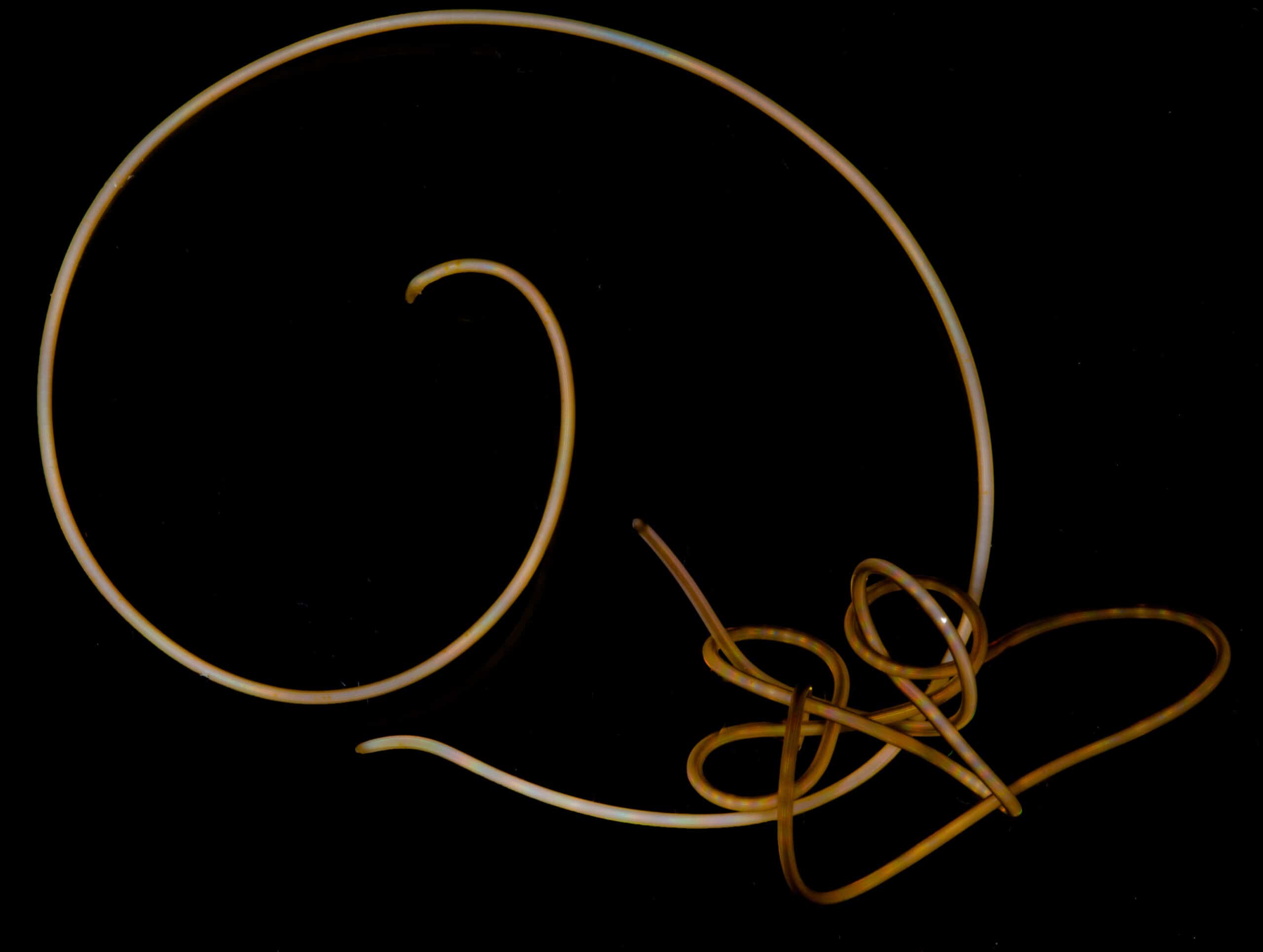
One encounters many peculiar creatures in the animal kingdom. Among them, hairworms stand out as some of the most extraordinary. These parasitic worms possess the uncanny ability to manipulate the behavior of their hosts—a phenomenon often referred to as “mind control.”
A recent multi-university study published in the journal Current Biology has shed light on yet another enigmatic aspect of hairworms: they appear to be missing approximately 30% of the genes researchers anticipated them to possess. Furthermore, these absent genes are responsible for the development of cilia—the hair-like structures ubiquitous in the cells of nearly all known animals.
An intriguing parasite
Hairworms, slender strands reminiscent of spaghetti, can be found across the globe. Their unassuming physiques offer a glimpse into their parasitic lifestyle—they lack excretory, respiratory, and circulatory systems, spending most of their lives inside the bodies of other animals on which they depend.
“One of the coolest things, maybe the thing that they are most known for, is that they can affect the behavior of their hosts and make them do things that they wouldn’t do otherwise,” said lead author Tauana Cunha, a postdoctoral researcher at Chicago’s Field Museum.
Hairworms comprise several hundred species. Their eggs hatch in water, with hairworm larvae serving as prey for minuscule water-dwelling predators like mayfly larvae. In turn, these predators are consumed by larger land-dwelling creatures such as crickets. After reaching adulthood inside their new hosts, hairworms manipulate their behavior.
Hairworms produce mind-controlling chemicals that cause their cricket host to move toward light. Because water bodies reflect moonlight, this often sends crickets toward lakes and streams. Once in the water, the worms swim out of their hosts’ butts and start mating, knotting themselves together, to begin the cycle anew.
That wasn’t the only odd thing though. Cunha and her colleagues obtained DNA samples from one freshwater and one saltwater hairworm and found some interesting results.
“We set out to sequence their genomes, because nothing like them has ever been sequenced before at that level,” Cunha said. “The goal was to produce those genomes and eventually use them to understand the evolutionary relationships between hairworms and other kinds of animals. What we found, which was very surprising, was that both hairworm genomes were missing about 30% of a set of genes that are expected to be present across basically all groups of animals.”
By scrutinizing the functions of these absent genes in other animal groups, Cunha and her colleagues discovered their association with cilia production.
“Cilia are organelles, small structures at the cellular level, that are basically present across all animals and even more broadly, in protists and some plants and fungi. So they’re present across a large diversity of life on Earth,” Cunha explained.
The finding opens the door to several new questions. It’s not clear how the lack of cilia has affected hairworms, or if the hairworms’ parasitic behavior could be related to the missing cilia.
Previous observations indicated the absence of cilia in hairworms. For instance, hairworm sperm lacked tails. Nonetheless, the lack of ciliated hairworm cells alone did not provide definitive proof of their absence.
“Prior to our study, it appeared that hairworms did not possess any cilia,” Cunha said. “However, we lacked concrete evidence. Now, with the genomes, we have observed that hairworms lack the genes responsible for cilia production in other animals—they lack the essential machinery required for cilia formation.”
The discovery paves the way for numerous intriguing questions. The precise ramifications of cilia absence in hairworms remain unclear, as does the potential relationship between their parasitic behavior and the missing cilia.
“There are plenty of other parasitic organisms that aren’t missing these specific genes, so we cannot say that the genes are missing because of their parasitic lifestyle,” says Cunha. “But parasitic organisms in general are often missing lots of genes. It’s hypothesized that because parasites are not using certain structures and instead rely on their hosts, they end up losing those structures.”
Hairworms are not the sole parasites capable of exerting “mind control.” This captivating behavior manifests in distant relatives such as the organism responsible for toxoplasmosis, which reduces rodents’ fear of cats, as well as in the fungus Ophiocordyceps, popularized by the video game and TV show The Last of Us, known to manipulate ants to spread its spores.
Although these organisms share a tenuous connection to hairworms, Cunha suggests that this study could aid in identifying common mechanisms underlying such behavior.
“By doing this comparative analysis across organisms in the future, we might be able to look for similarities. Or maybe these organisms evolved similar behaviors in completely different ways from each other.”









